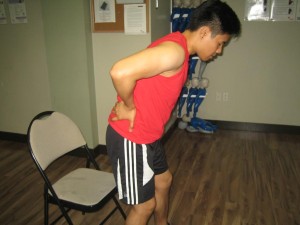Abdominal aortic aneurysm is defined as a protrusion or inflammation in the aorta. This is the major blood vessel starting from the heart via the chest and abdomen. Remember that this condition can be dangerous if not diagnosed early.
It might grow larger after some time and even rupture, resulting to dangerous bleeding. Men over 65 years old are at higher risk.
What are the signs?
Abdominal aortic aneurysm does not typically trigger any evident signs and often only detected during tests for other purposes.
Some individuals with the condition might have:
- Pulsating sensation in the abdomen
- Low back pain
- Abdominal pain
Abdominal aortic aneurysm does not typically trigger any evident signs and often only detected during tests for other purposes.
In case the aneurysm ruptures, it can trigger the following:
- Dizziness
- Abrupt, intense pain in the low back or abdomen
- Rapid heart rate
- Pale, sweaty and clammy skin
- Shortness of breath
- Passing out or fainting
When to consult a doctor
A doctor should be seen right away if symptoms are present especially those who are at risk.
An ultrasound scan of the abdomen can be carried out to check if one is present. If the signs of a ruptured aneurysm are present, call for emergency assistance right away.
Risk factors
An abdominal aortic aneurysm can develop once the margins of the aorta deteriorate and balloon outward. It is not precisely clear why this occurs, but there are factors that heightens the risk.
Individuals at risk include:
- Men aged 65 or older
- Those who smoke
- Those with high blood pressure
- Those who have a family history of the condition
Management of an abdominal aortic aneurysm
The ideal treatment for an abdominal aortic aneurysm is based on its size. The treatment is not always required right away if the risk for a rupture is low.
- For a small aneurysm, an ultrasound is suggested yearly to monitor if it is growing. Healthy lifestyle changes are recommended to stop it from growing.
- For a medium-sized aneurysm, an ultrasound is required every 3 months to check if it is growing along with lifestyle modifications.
- A large aneurysm requires surgery to prevent it from growing or rupturing.

